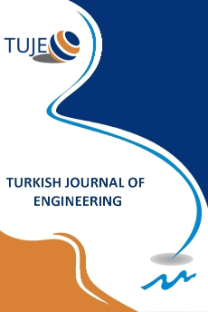Comparison of online and face-to-face exams conducted in Physics I course in higher education
Comparison of online and face-to-face exams conducted in Physics I course in higher education
Physics I Course Online Exam, Face-to-Face Exam,
___
- Saban, A., Özer, H. Ġ., & Tümer, A. E. (2010). Çevrimiçi ders materyalleri ve çevrimiçi sınav sistemi ile ilgili öğrenci görüşleri [Students’ opinions about online course materials and online examination system]. E-Journal of New World Sciences Academy, 5(4), 2238- 2244.
- Durak, G., Çankaya, S., & İzmirli, S. (2020). Covid–19 pandemi döneminde Türkiye’deki üniversitelerin uzaktan eğitim sistemlerinin incelenmesi [Examining the Turkish universities’ distance education systems during the COVID-19 pandemic]. Necatibey Faculty of Education Electronic Journal of Science and Mathematics Education, 14(1), 787–809.
- Çakın, M., & Akyavuz, E. K. (2020). Covid–19 süreci ve eğitime yansıması: öğretmen görüşlerinin incelenmesi [The Covid-19 process and its reflection on education: An analysis on teachers’ opinions]. International Journal of Social Sciences and Education Research, 6(2), 165–186.
- Akdemir, A., & Kılıç, A. (2020). Yükseköğretim öğrencilerinin uzaktan eğitim uygulamalarına bakışının belirlenmesi [Higher education students‘views on distance education practices]. Milli Eğitim Dergisi, Salgın Sürecinde Türkiye'de ve Dünyada Eğitim [Özel Sayı], 49(1), 685-712.
- Akıncı, M., & Pişkin, T. M. (2021). The Problems Encountered by Pre-Service Mathematics Teachers in Distance Education Practices and Solution Suggestions. Ekev Academy Journal, 25 (85), 359 – 376.
- Baran, H. (2020). Açık ve uzaktan eğitimde ölçme ve değerlendirme [Assessment and Evaluation in open and distence education]. Öğretmen, Açıköğretim Uygulamaları ve Araştırmaları Dergisi AUAd, 6(1), 28-40.
- Altan, T., & Seferoğlu, S. S. (2009). Uzaktan eğitimde değerlendirme süreci: Öğrenci görüşlerinin sistemin gelişimine katkıları [Evaluation process in distance education: Contribution of Students views to the development of the system]. 3 rd International Computer & Instructional Technologies Symposium (ICITS 2009). 7-9 October, Karadeniz Technical University, Trabzon
- Birgin, O. (2016). Bloom taksonomisi. E. Bingölbali, S. Arslan, & İ.Ö. Zembat (Ed.). Matematik eğitiminde teoriler içinde (ss. 839-860). Ankara: Pegem Akademi.
- Baştürk, S., & Taştepe, M. (2018). Bilişsel Davranışların ölçülmesi. Baştürk S. (Ed.). Eğitimde Ölçme ve Değerlendirme içinnde (ss. 307-325). 2. Basım, Ankara: Nobel Yayın.
- İlhan, A. & Gülersoy, A. E. (2019). Evaluation of the achievements of 10th grade geography course curriculum according to the revised bloom taxonomy. International Journal of Geography and Geography Education, 39, 10-28.
- Çepni, S. (2007). Araştırma ve Proje Çalışmalarına Giriş, [Introduction research and Project research] (Genişletilmiş 3. Baskı.), Trabzon: Celepler Yayıncılık.
- Hubberman, M. & Miles, M. B. (2002). The qualitative researcher's companion. California: Sage.
- Delacre, M., Lakens, D., & Leys, C. (2017). Why Psychologists Should by Default Use Welch’s t-test Instead of Student’s t-test. International Review of Social Psychology, 30(1), 92–101. https://doi.org/10.5334/irsp.82
- Bloom B S (Ed.). Englehard, M. D., Furst, E. J., Hill, W. H. & Krathwohl, D. R. (1956). Taxonomy q/'educational objectives. "The classification of educational goals. Handbook L" Cognitive domain, New York: David McKay.
- Küçükahmet, L. (2003). Öğretimde planlama ve değerlendirme [Planning and evaluation in teaching], 13. Baskı (13th edition), Ankara: Nobel Yayıncılık.
- Köğce, D., Aydın, M. & Yıldız, C. (2009). Bloom Taksonomisinin Revizyonu: Genel Bir Bakış [A Revision of Bloom’s Taxonomy: An Overview]. İlköğretim Online, 8. 3, 1-7
- Tutkun, Ö. F. (2012). Bloom’un Yenilenmiş Taksonomisi Üzerine Genel Bir Bakış. Sakarya University Journal of Education, 14, 14-21.
- Erginer, E. (2006). Öğretimi planlama uygulama ve değerlendirme. Ankara: Pegem akademi yayıncılık.
- Yağcı, M., Ekiz, H. & Gelbal, S. (2015). Yeni bir çevrimiçi sınav modeli geliştirilmesi ve uygulanması [Designing and Applying a New Online Examination Model]. Ahi Evran University Journal of Kırşehir Education Faculty. 16(1), 269-288.
- Çiğdem, H. & Tan, Ş. (2014). Matematik dersinde isteğe bağlı çevrimiçi kısa sınav uygulanması hakkında öğrenci görüşleri [Students’ Opinions on Administering Optional Online Quizzes in a two-year College Mathematics Course]. Bilgisayar ve Eğitim Araştırmaları Dergisi, 2(4), 51-73.
- Sırakaya, M, Alsancak, S. D., & Kılıç, Ç. E. (2015). Uzaktan eğitim öğrencilerinin çevrimiçi sınava yönelik tutum düzeylerinin incelenmesi. Kastamonu Journal of Education, 23 (1), 87-104.
- ISSN: 2587-1366
- Yayın Aralığı: 4
- Başlangıç: 2017
- Yayıncı: Mersin Uüniversitesi
Comparison of online and face-to-face exams conducted in Physics I course in higher education
Mustafa Nuri URAL, Zeynep BAŞKAN TAKAOĞLU
Evaulation of renewable energy source alternatives prioritization
Barış KANTOĞLU, İrem DUZDAR ARGUN
Investigation of the discharge flow rate patterns at real-time traffic signal control intersections
Nihat Can KARABULUT, Murat ÖZEN, Oruç ALTINTAŞI
Fuad ALHAJ OMAR, Nihat PAMUK, Ahmet Afşin KULAKSIZ
Esra SARAÇ EŞSİZ, Vahide Nida KILIÇ, Murat OTURAKÇI
A combined approach of base and meta learners for hybrid system
Abdul Ahad ABRO, Waqas Ahmed SIDDIQUE, Mir Sajjad Hussain TALPUR, Awais Khan JUMANİ, Erkan YAŞAR
Investigation of acceleration on non-structural building elements under earthquake effect
